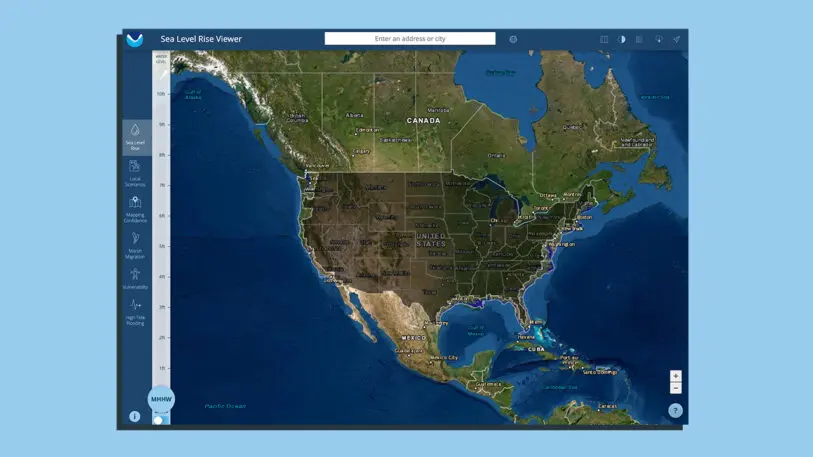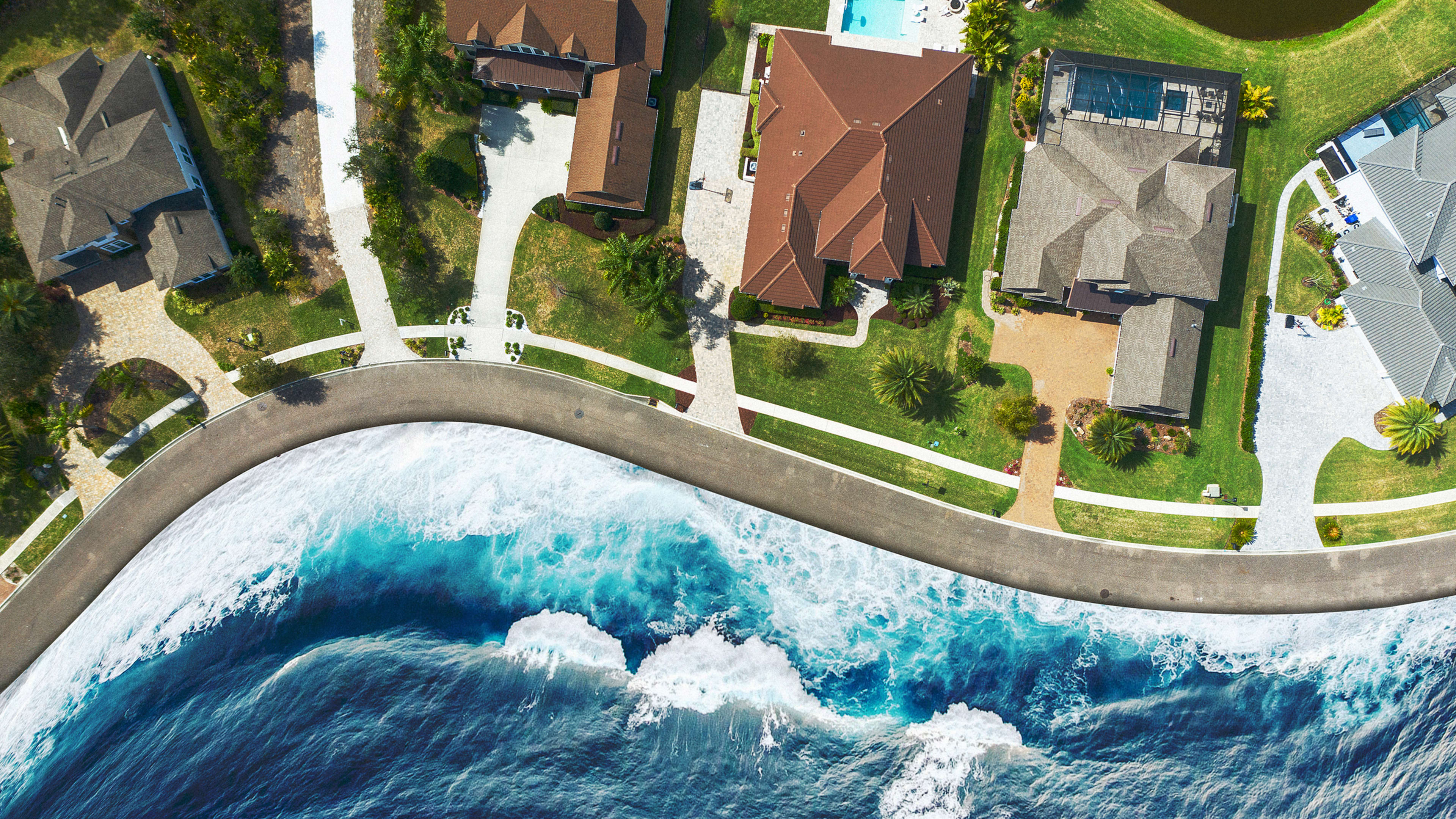In less than three decades, the sea level in coastal cities in the U.S. could rise by an average of 10 to 12 inches—about the same amount it rose over the last century. A new report from the National Oceanic and Atmospheric Administration gives detailed projections for sea level rise in every state through the year 2150. In some areas, like the Gulf Coast, the water could rise as much as a foot and a half by the middle of this century.


Some 15 million American houses are already at risk of flooding. But the problem keeps getting worse as the planet heats up, both because of heavier storms and because of sea level rise. NOAA projects that moderate flooding will happen 10 times more often by the middle of the century than it does today. Major flooding will happen five times more often.
[Image: NOAA]By the end of the century, an average of 2 feet of sea level rise is likely in coastal cities. If emissions don’t fall quickly enough, the water could rise between 3.5 and 7 feet, swamping entire neighborhoods in places like Miami.
Recognize your brand’s excellence by applying to this year’s Brands That Matter Awards before the final deadline, June 7.
Sign up for Brands That Matter notifications here.
